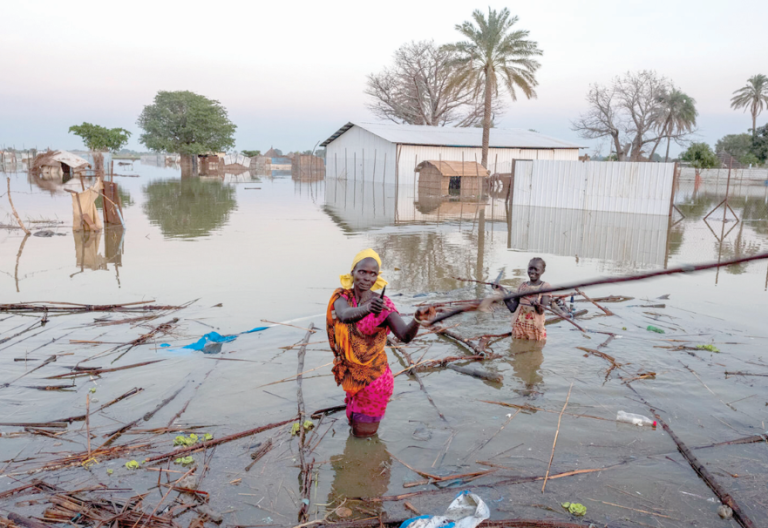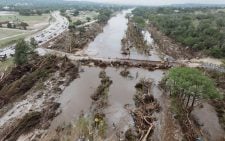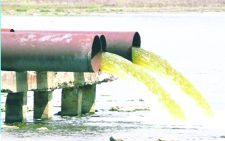Within its own crisis, water can combat climate change

Water is life. That is the unanimous compliment humanity has bestowed on this precious commodity as it assumes even greater significance in today’s global climate crisis.
Climate change is primarily a water crisis, its impact felt through worsening floods, rising sea levels, shrinking ice fields and glaciers, wildfires and droughts.
However, water can fight climate change, according to the United Nations Development Programme (UNDP). Sustainable water management is central to building the resilience of societies and ecosystems and to reducing carbon emissions.
Everyone has a role to play. Actions at the individual and household level are vital with knowledge of the connection between water, economic growth and shared prosperity, the World Bank echoes UNDP.
For Kenya and other developing countries caught in the web of the global inequalities in water and sanitation access, there is an urgent need for pro-poor and inclusive interventions to improve water security and strengthen climate resilience while reducing poverty.
A world free of poverty, on a liveable planet, depends on achieving water security for all. Yet, climate change is disrupting the water cycle, leading to water scarcity and water-related disasters like floods and drought.
These effects of climate change threaten sustainable development, biodiversity and human rights access to clean water, more so in vulnerable developing countries.
Water disasters
Climate change, rising temperatures disrupt precipitation patterns, extreme weather events become more frequent and intense, water availability becomes less predictable, and water quality decreases.
The effects include water-related disasters ranging from floods, droughts, landslides and storm surges. These effects impact lives worldwide, leading to death, injury, loss of livelihoods and displacement. They place a huge burden on societies, economies and the environment.
Beyond this negative outlook, solutions are available, involving increasing water storage, expanding investments in water infrastructure, developing advanced warning systems, and improving monitoring, data-sharing and cross-border collaboration.
Other solutions include assessing water resources, developing water-resource management strategies and protecting, and restoring, freshwater ecosystems.
UNDP’s Cap-Net is an international network that strengthens knowledge for sustainable water management. Water and climate change are inextricably linked. The Water and Climate Coalition partnership tackles climate change and water as one. Extreme weather events are making water scarcer, more unpredictable, more polluted; or all three.
These impacts throughout the water cycle threaten sustainable development, biodiversity, and people’s access to water and sanitation.
Flooding and rising sea levels can contaminate water, land and water resources with saltwater or faecal matter, and cause damage to water and sanitation infrastructure such as water points, wells, toilets and wastewater treatment facilities.
Glaciers, ice caps and snow fields are rapidly disappearing. Meltwater feeds many of the great river systems. Scientists say volatility in the cryosphere (the frozen arts of the earth) can affect the regulation of freshwater resources for vast numbers of people in lowland areas.
Droughts and wildfires are destabilising communities and triggering civil unrest and migration in many areas. Destruction of vegetation and tree cover exacerbates soil erosion and reduces groundwater recharge, increasing water scarcity and food insecurity.
Growing demand for water increases the need for energy-intensive water pumping, transportation and treatment, and has contributed to the degradation of critical water-dependent carbon sinks such as peatlands.
Water-intensive agriculture for food production, particularly meat, and for growing crops used as biofuels, can further exacerbate water scarcity.
Experts say these challenges demand that climate policymakers must put water at the heart of climate action. Sustainable water management helps society adapt to climate change by building resilience, protecting health and saving lives.
It also mitigates climate change itself by protecting ecosystems and reducing carbon emissions from water and sanitation transportation and treatment. Politicians are therefore required to cooperate across national borders to balance the water needs of communities, industry, agriculture and ecosystems.
Just as it is necessary in tackling the climate crisis, innovative financing for water resources is needed to help attract investment, create jobs, and support governments in fulfilling their water and climate goals.
Scientists have identified sustainable, affordable and scalable water solutions such as improving carbon storage, protecting natural buffers, harvesting rainwater, adopting climate-smart agriculture, reusing wastewater and harnessing groundwater.
Nature’s solutions
Peatlands store at least twice as much carbon as all of Earth’s forests. Mangrove soils can sequester up to three or four times more carbon than terrestrial soils. Protecting and expanding these types of environments can have a major impact on climate change. Coastal mangroves and wetlands are effective and inexpensive natural barriers to flooding, extreme weather events and erosion, as the vegetation helps regulate water flow and binds the soil in flood plains, river banks and coastlines.
Rainwater capture can prove to be particularly useful in regions with uneven rainfall distribution, to build resilience to shocks and ensure supplies for dry periods. Techniques include rooftop capture for small-scale use and surface dams to slow run-off to reduce soil erosion and increase aquifer recharge.
Adopting climate-smart agriculture is attained through the use of conservation techniques that improve organic matter to increase soil moisture retention, drip irrigation, reducing post-harvest losses and food waste and, transforming waste into a source of nutrients or biofuels or biogas.
Unconventional water resources, such as regulated treated wastewater, can be used for irrigation and industrial and municipal purposes. Safely managed wastewater s an affordable and sustainable source of water, energy, nutrients and other recoverable materials.
In many places, groundwater is over-used and polluted, in other places, it is an unknown quantity. Exploring, protecting and sustainably using groundwater is central to adapting to climate change and meeting the needs of a growing population.















